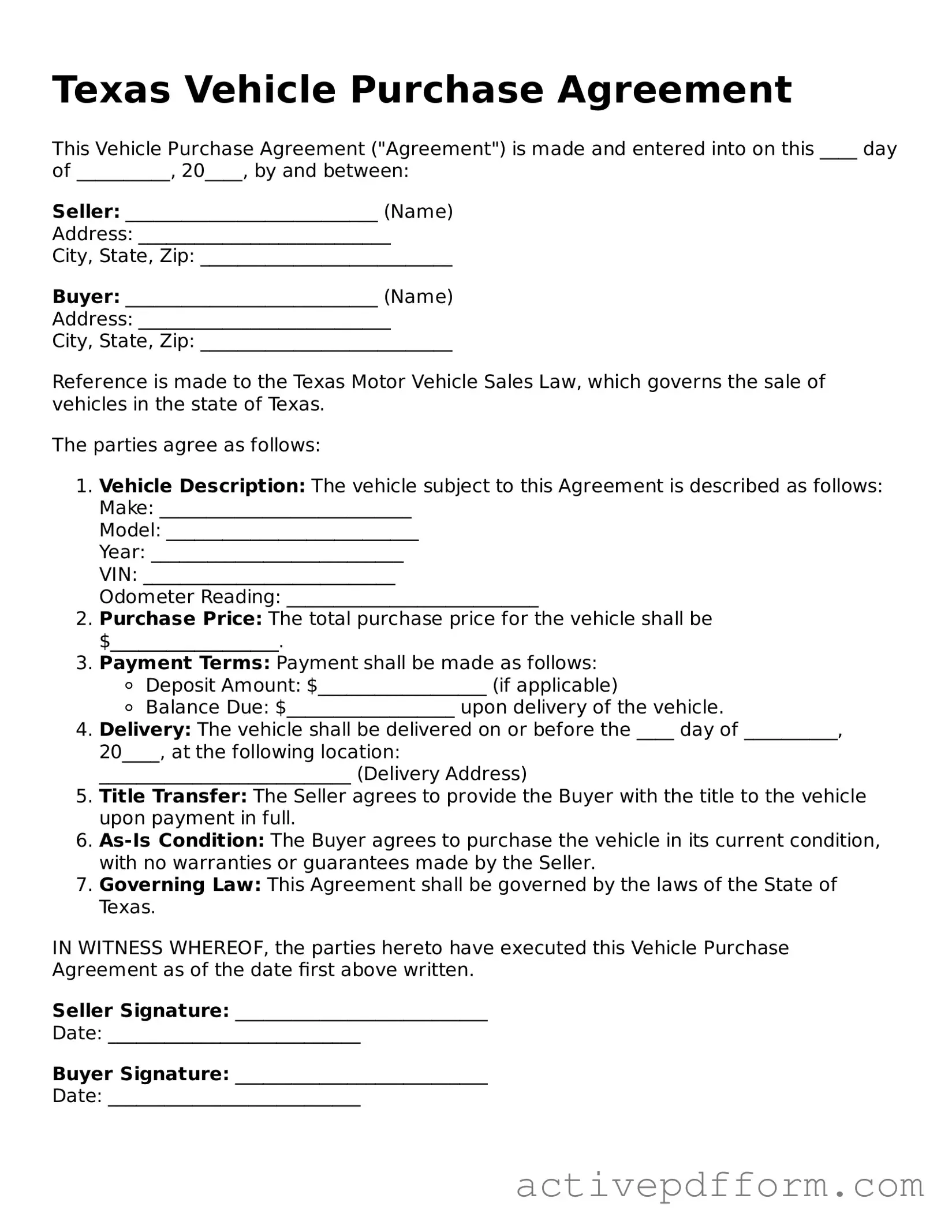Texas Vehicle Purchase Agreement
This Vehicle Purchase Agreement ("Agreement") is made and entered into on this ____ day of __________, 20____, by and between:
Seller: ___________________________ (Name)
Address: ___________________________
City, State, Zip: ___________________________
Buyer: ___________________________ (Name)
Address: ___________________________
City, State, Zip: ___________________________
Reference is made to the Texas Motor Vehicle Sales Law, which governs the sale of vehicles in the state of Texas.
The parties agree as follows:
- Vehicle Description: The vehicle subject to this Agreement is described as follows:
Make: ___________________________
Model: ___________________________
Year: ___________________________
VIN: ___________________________
Odometer Reading: ___________________________
- Purchase Price: The total purchase price for the vehicle shall be $__________________.
- Payment Terms: Payment shall be made as follows:
- Deposit Amount: $__________________ (if applicable)
- Balance Due: $__________________ upon delivery of the vehicle.
- Delivery: The vehicle shall be delivered on or before the ____ day of __________, 20____, at the following location:
___________________________ (Delivery Address)
- Title Transfer: The Seller agrees to provide the Buyer with the title to the vehicle upon payment in full.
- As-Is Condition: The Buyer agrees to purchase the vehicle in its current condition, with no warranties or guarantees made by the Seller.
- Governing Law: This Agreement shall be governed by the laws of the State of Texas.
IN WITNESS WHEREOF, the parties hereto have executed this Vehicle Purchase Agreement as of the date first above written.
Seller Signature: ___________________________
Date: ___________________________
Buyer Signature: ___________________________
Date: ___________________________
